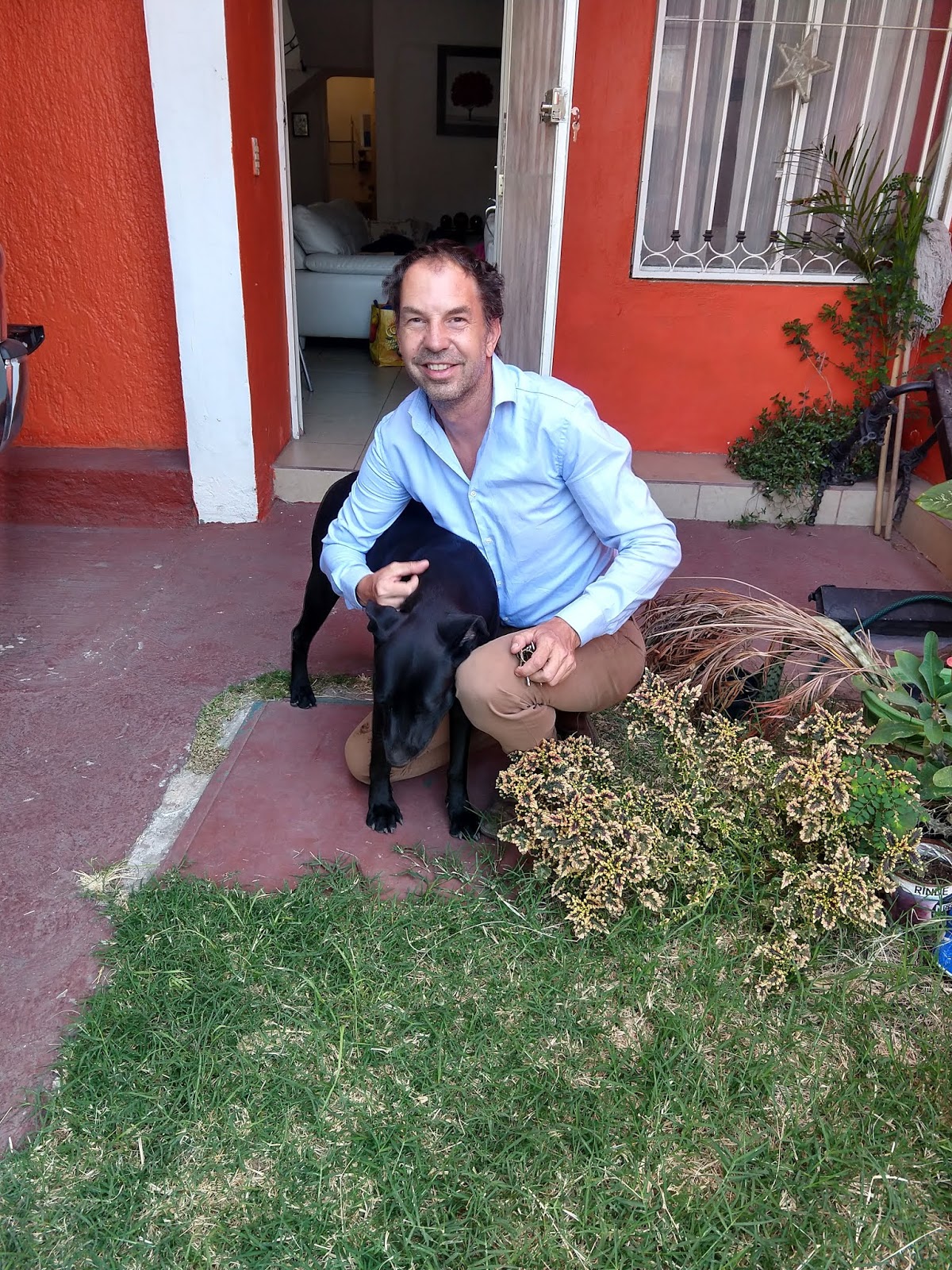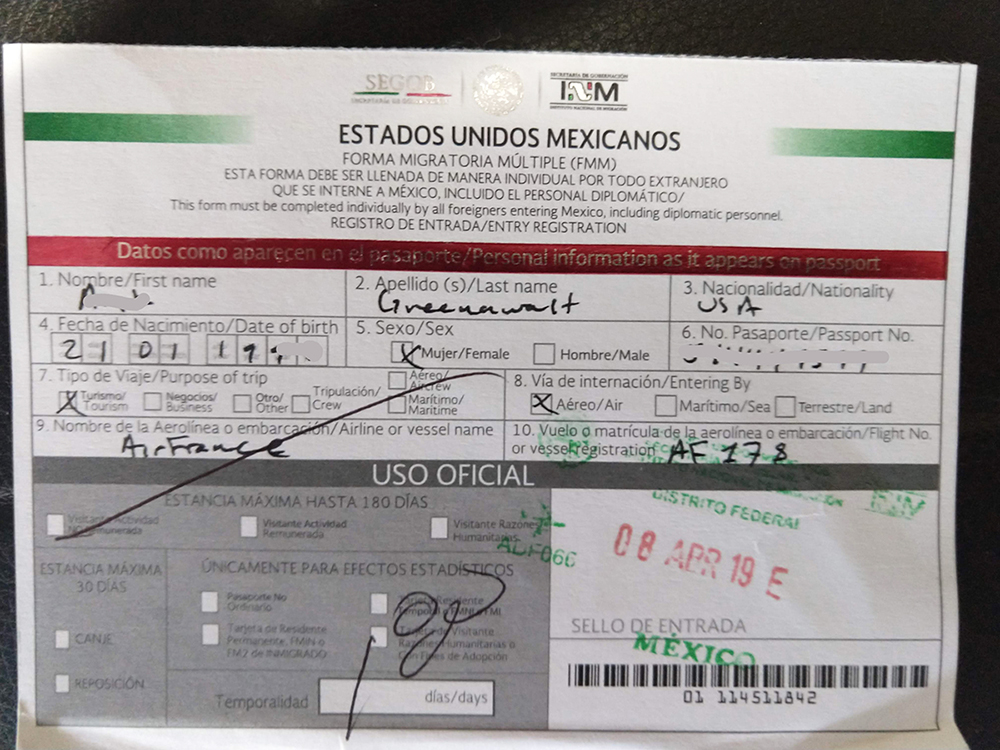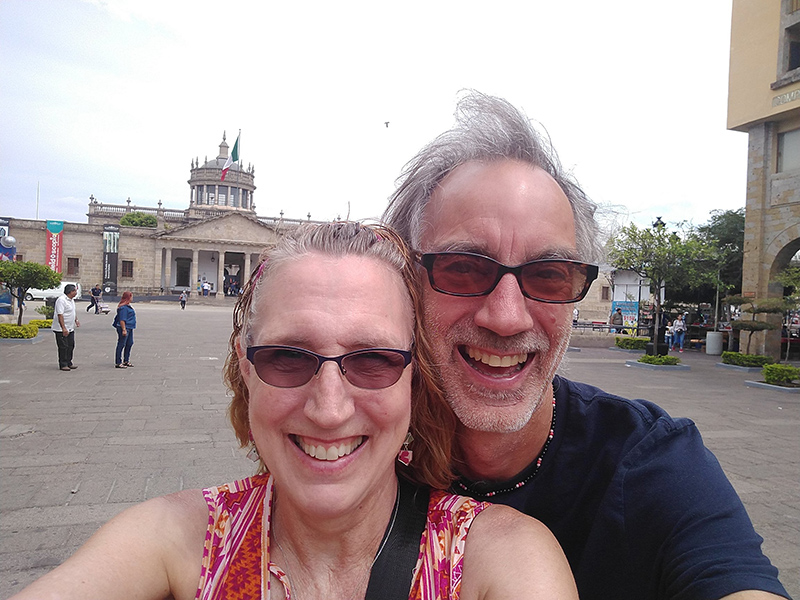Our first priority in starting our life in Mexico was to learn
the Spanish language. If we are going to spend the next few years living in
countries where Spanish is the primary language spoken, we felt we needed to
get a good grasp of the language early on.
mid-90s and were not Spanish beginners, we knew that we had a long way to go
before we would feel comfortable with the language. We want to obtain a level
of proficiency so that we can develop friendships and truly feel part of Mexico
(and other Spanish speaking countries we choose to live in or visit). Knowing the language is also important
logistically, to allow us to navigate daily tasks such as asking where a
bathroom is and understand the answer, being able to order food at a street “puesto”
or in a restaurant, asking for directions, buying groceries, paying for items
at stores, going to the doctor’s office, and more.
using books we still had around, a CD series and an app called Duolingo, and we
decided to immerse ourselves in learning the language as soon as we arrived in Mexico.
We chose to attend a language school in Guadalajara (GDL), Mexico’s second
largest city, in the central region of Mexico. Like most Americans, we had
never been to the region, spending our previous trips on Mexican coasts for
beach vacations. This would give us an opportunity to begin our learning
process while exploring a new area.
Guadalajara Language
Center
 We chose the Guadalajara Language Center (GLC), which is actually located in Tlaquepaque, a town at the southern edge of
We chose the Guadalajara Language Center (GLC), which is actually located in Tlaquepaque, a town at the southern edge ofGuadalajara known for its pottery and ceramics. In fact, our apartment is less
than quarter-mile from the city boundary and we routinely run in GDL. The school
offered several language programs, including an advertised CLEP prep class,
Lexie could take and get college credit for. We signed up for the immersion
program, where we would take 4 hours a day of classes for 8 weeks, Monday
through Friday. We took written placement exams and were a bit surprised that
we all tested higher than expected.
first thing Monday morning, while Lex decided to take a week off to recover
from the long trip from the east coast of the United States before starting.
The location of our apartment was perfect, just a seven-minute walk from the
school. Daily classes ran from 9 -11 AM and then 11:30 AM-1:30 PM, after which
we walked about 3 minutes to the Tlaquepaque main square to choose from the
food trucks and local eateries.
who is married to a Mexican woman, is located in an unassuming two-story blue
building on a street corner just two blocks from the Centro Historico. It
contains five small classrooms, a little kitchen for brewing coffee each day
for grateful students, a large hallway with a couple of computers for students’
use, and a larger gathering room with a couple of couches and chairs, and
Wouter’s desk in a corner.
world, though they seem to be clustered on the California coastline and western
Canada, probably because of easy flights to Guadalajara. Some stay for only a
week or two, some for the winter, so new placements need to be made every week,
and the first thing Wouter does on Mondays is assign students to classes based
on their tests and hope for the best. If it’s not a fit, changes can be made
after the first session on Monday. In the mornings we had one instructor and in
the afternoon a different instructor. Wouter also provides resources for doing
other activities to help discover the area, including organizing a weekly hike
into the Barranca (canyon), and providing students with info about Lucha Libre,
salsa and bachata dance lessons, a walking tour of Tlaquepaque, and more.
 |
| Lex with the GLC resident dog, Estrella (Star) |
Ay, Caramba!
fortunate, but in too high a level for our comprehension skills, and Spanish
words just flew over our heads. Fortunately, during the break adjustments were
made, and we were placed in an appropriate level class and could get down to
the business of learning.
Interesting Classmates
one other person in our class, and at most a total of four. Since we often
shared stories from our lives in Spanish conversations, we got to know some of
those people fairly well. Everyone had an interesting story as to why they were
there. Aaron, from Napa Valley, was our classmate for several weeks. He worked
for a small vineyard and wanted to be able to communicate better with the
Mexican workers when he traveled. He also had financial incentive from his
company, so he immersed himself in and out of class, living in a homestay so he
could speak with his hosts in Spanish and enjoy home-cooked Mexican meals. Shireen,
from Boulder, CO, spent winters in an RV with her partner in a small beach
community called Guayabita on the west coast of Mexico. Jack, a gay librarian
from Vancouver, talked about the drag shows he attended at home and the Mexican
friends he partied with in Tlaquepaque. Eva was a retired English teacher who
spent several weeks in Mexico. David worked on a boat that took people on
National Geographic eco-tours from Alaska to South America. Francine, originally from Iran, was
a scientist-engineer studying Spanish between jobs. We met retirees and
backpackers, and a young Catholic couple with seven kids who were starting life
as missionaries in Ecuador.
 |
| Our buddy Eva |
2!














































